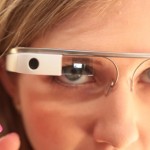 As Augmented Reality makes giant steps every day towards becoming a mass technology in several distinct domains of human activity (the 8-th mass media according to Tomi Ahonen), Augmented World Expo 2013, held on 4-5 June in Santa Clara (CA), offered a glimpse on the future of AR.
As Augmented Reality makes giant steps every day towards becoming a mass technology in several distinct domains of human activity (the 8-th mass media according to Tomi Ahonen), Augmented World Expo 2013, held on 4-5 June in Santa Clara (CA), offered a glimpse on the future of AR.
Let’s try to recap what in our opinion appear to be the six main trends that emerged from the delivered technologies and presentations.
1) The revolution of Eye Wear is around the corner. Driven by the possible advent of Google Glass, the new eyewear industry is gearing up the wheels looking forward to the game changing potential of this technology. This was probably the most relevant fact that emerged from the Expo. Players like Google and Epson have recently entered the market of the eyewear for AR, whereas other companies in the sector like Vuzix and eMagin have showcased their latest developments of the technology. Finally, new companies like Meta, backed by eyewear pioneer Steve Mann, are doing nice things. A relevant distinction between 1st generation glasses and next-generation glasses has been introduced by Steve Mann during his speech and has been discussed through all the event in both formal and informal sessions. According to this taxonomy Google Glass would be at this early stage of 1st generation glasses, – and this is true also in the opinion of the writer-. Other topics included the legal and ethical implications of using AR glasses in public spaces.
2) Industrial maintenance applications. A whole new set of applications is emerging as a consequence of addressing specific practical problems in different industrial sectors. Several companies showcased technology that enables the training and support for operations in industrial tasks including maintenance and repair. Epson, Merlin, NGRAIN, Columbia University, Seabery, Joinpad all demonstrated interesting applications.
3) Integration of Software and Hardware. Another interesting tendency that we observed was the birth of the first applications that link together augmented reality with remotely controlled devices. This is the case of Sphero by Orbotix. A trend that we feel will definitely take off in the near future.
4) Gaming. According to SmarTech Markets and Publishing the gaming and entertainment sector will be the first revenue generating stream for the Augmented Reality industry in the next few years. Some interesting research applications have been showcased, including the ARpool, UC Davis Sandbox and Sphero.
5) Mobile and Cloud based applications. Mobile AR has driven the AR industry during the last few years. Players like Qualcomm and Metaio featured their technology and services at their booth and presentations. Wikitude launched a new tool for creating content with their platform. Seac 02 presented their nice AR Code application for marketing and communication campaigns.
6) Next steps in AR tools and techniques. Most of the exhibitors demonstrated 2D NFT and SLAM tracking techniques during the event. Some employed depth cameras to demonstrate how changing patterns of behaviuor in a system could be recognized and tracked. Few others, like Metaio and Inglobe Technologies, demonstrated their latest 3D trackers as the next natural step for the tracking technology that enables powerful AR tools to be used in different sectors as opposed to more standard 2D image tracking and GPS/compass referencing techniques.
All that said, the overall challenge that emerged from the conference was synthesized by Mark Billinghurst presentation, i.e. to design technology that helps to create natural and useful augmented reality experiences in the real world.
This post is also available in: Italian
